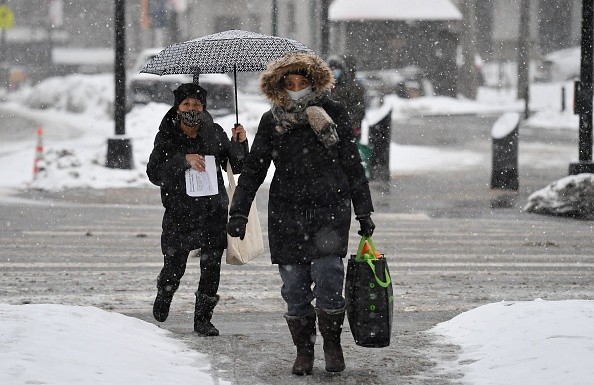While most of the United States has been facing fall heatwave, Alaska is experiencing something quite different.

Low Temperatures in Alaska
As the contiguous United Areas continue to experience exceptionally high temperatures in December, states outside of the lower 48 are experiencing their own severe weather, from snowstorm warnings in Hawaii to record-breaking cold temperatures and snowstorm warnings in Alaska.
Alaska had a month to remember during West's bizarre month of record-breaking temperature, record-breaking rain, and record-breaking snowlessness, but in a completely different narrative, according to Accuweather.
Bristol Bay Borough which is the state's first county, established in 1962, is home to Katmai National Park, serves as the easternmost arm of the Bering Sea, and was also home to the country's coldest temperatures last month, with the town of King Salmon experiencing its coldest November on in history, averaging only 4 degrees F, while Cold Bay averaged 27.7 degrees.
The regions weren't alone, according to the National Weather Service, as many other sites around the state saw one of their five coldest Novembers on record.
The dome of high pressure that has risen over the western United States, which has caused the record-breaking high temperatures, has moved storm patterns to the north, according to AccuWeather Senior Meteorologist John Gresiak. Cold air has been trapped in the northwest corner of North America as a result of this ripple effect.
According to Gresiak, a very cold and dry air mass has accumulated over Alaska for the last several weeks to the north of the succession of atmospheric river storms that have affected regions of western Canada and the northwest United States. Even the usually mild southern coastal regions have been extremely chilly.
Also Read: Antarctic Chill: The South Pole Just Experienced its Coldest Winter in History
Why is Cold Air Trapped in Alaska?
Some of the meteorological elements that assist to temper the cold have been eliminated in Alaska's southern shore.
A multitude of factors, according to Alaska-based climatologist Brian Brettshneider of AccuWeather, are responsible for keeping the cold air stuck in Alaska for the whole month of November.
While it is not surprising for Alaskans to see temperatures decrease during meteorological winter as the state experiences less sunshine, Brettshneider said the trapped mass of cold air has prevented warmer air from creeping into the state to help moderate temperatures as solar energy is lost.
Over the western half of the state, an upper-level trough of low pressure has formed, and it hasn't moved much in weeks. So the state keeps losing more and more solar energy, radiating it out to space, and the upper-level low has blocked any moderating air from returning, so it simply becomes colder and colder.
How Long will the Cold Temperature Last?
Furthermore, Brettshneider said that the icepack in the Bering Sea is more entrenched this season than in previous years, limiting any moderating effects that warmer ocean waters may have.
While the very low temperatures are significant, Brettshneider believes it is the cold's endurance that is really remarkable.
"These types of features tend to come and go during the cold season, but this is has been very persistent, it's been like anchored in place for weeks and that's really been perhaps the most unusual part of it," he said.
The unexpected cold temperatures seem not to be going anywhere.
Related Article: More Than 100 Million US Residents Under Cold Weather Warnings as a Result of Low Temperatures
For more news, updates about cold temperatures and similar topics don't forget to follow Nature World News!
© 2024 NatureWorldNews.com All rights reserved. Do not reproduce without permission.





